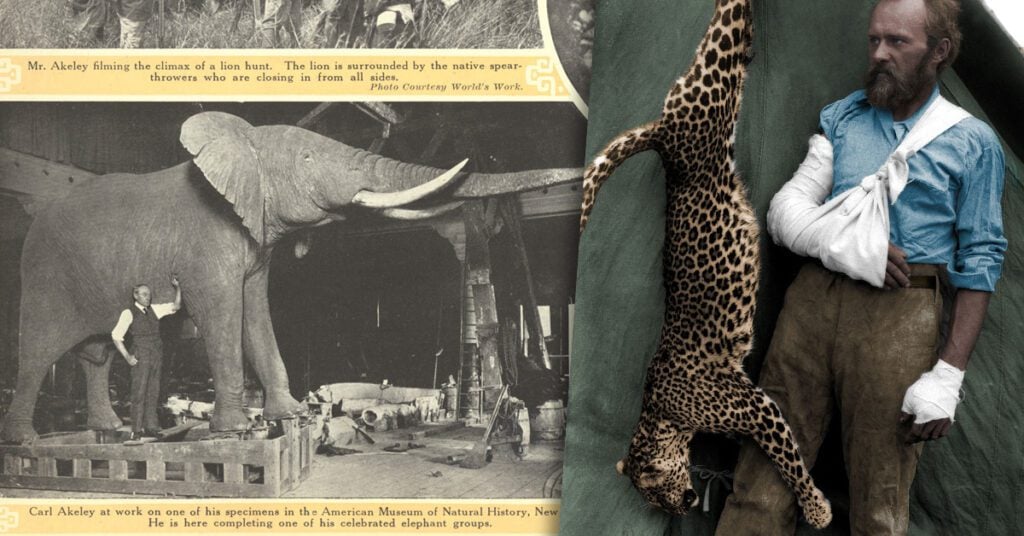A taxidermist is a person whose job is to prepare the skins of dead animals and birds and fill them with a special material to make them look as if they are alive. But did you know that a famous taxidermist killed a Leopard with his bare hands?
American Taxidermist, Carl Akeley killed a leopard with his bare hands in 1896. This was during his visit to Africa. He rammed his hands down on the leopard’s throat and choked it to death and was able to survive the attack.
Who is Carl Akeley?
Carl Akeley, born on May 19, 1864, in Clarendon, New York, is widely regarded as the father of modern taxidermy. He was also an explorer and naturalist who used art to celebrate and advocate for wilderness preservation.
He established the American Museum of Natural History (AMNH) Exhibitions Lab. It is an interdisciplinary department that combines scientific research and immersive design.
He created the first habitat diorama in 1889 while working at the Milwaukee Public Museum. The scene, which depicted a group of muskrats in a marsh, featured mounted specimens in a three-dimensional foreground that re-created a specific habitat and blended with a realistic background painting.
It was the start of a long career transporting viewers to animal habitats all over the world through stunningly detailed dioramas—the original virtual reality. (Source: Adventure Journal)
What is Carl Akeley’s Taxidermy Method?
Akeley believed and was obsessively committed to the idea that taxidermy could produce mounted animals that look lifelike and alive. He was equally committed to presenting mounts in the context of their scientifically accurate environments and social interactions.
His techniques produced anatomically correct, skinless mannequins of animals performing lifelike actions and postures. The mannequins were made primarily of papier mache and wire mesh and were extremely lightweight and hollow.
The mannequins were created by Akeley using precise field measurements and photographs and his knowledge of the animal’s anatomy and behavior in its natural environment. (Source: Adventure Journal)
Carl Akeley’s Final Days
Akeley regretted all the killing he’d done in his final years, but he never questioned the need for it. He returned to New York to work on his exhibitions. His lion pride, elephant herd, gorilla family, and all the other creatures that fill his hall are convinced of their importance to science and human culture.
On the other hand, much of the shooting that I have had to do in order to obtain specimens for museum collections has had none of this aspect at all and has made me feel a great deal like a murderer.
Carl Akeley, In the Brightest Africa
According to the most recent estimates, it now has the majority of the world’s mountain gorillas, numbering more than 1,000 individuals. In the fall of 1926, Akeley returned to the Virunga Mountains with his second wife, mountaineer, and photographer Mary Jobe Akeley. He became ill soon after arriving and died on November 18, 1926, of dysentery. He was laid to rest at the foot of Mt. Mikena, just two miles from the scene he recreated with his gorilla group. (Source: Adventure Journal)
